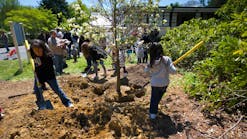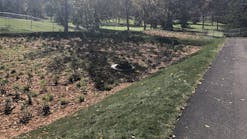Florida’s $7.4 Million Park to Increase Storm Water Treatment Capacity
Florida’s newest park, Osprey Acres Stormwater Park and Nature Preserve, has officially opened to the public. The $7.4 million park offers a view of Florida habitat while also filtering storm water before it is sent back into the Indian River Lagoon.
"This is historical Florida at its best," said the county storm water educator Alexis Peralta to TCPalm.
The 83.7 acre property is a blend of natural Florida ecosystems “including uphill pine, mesic oak hammock, a small scrub area and now manmade wetlands,” according to a sign posted at the park. “Having these various habitats promotes a wealth of biodiversity within the property.”
The land was purchased to increase the capacity of the county’s storm water treatment system, while providing recreational opportunities to residents and protection against overdevelopment.
The facility is designed to treat approximately 12 million gal of storm water that comes from the adjacent Osprey Marsh and canals, reported Hometown News TC. The trails provide a passive nutrient-removal process.
“The project is estimated to remove over 300 lb of total phosphorus and over 3,700 lb of total nitrogen per year. As one of the last large, relatively undisturbed upland areas remaining in Indian River County, it will provide a nature preserve for wildlife,” according to the council.
This removes the pollutants and nutrients from storm water that could cause algae blooms and damage the lagoon.
County Commission Chairman Bob Solari said the park has long-term benefits for county residents and visitors.
“Most of the property is a dedicated nature preserve and is home to an abundance of native wildlife,” said County Administrator Jason Brown in a statement. “As the planted aquatic portions of the preserve and treatment areas mature, they will become havens for many waterfowl and aquatic animals.”






